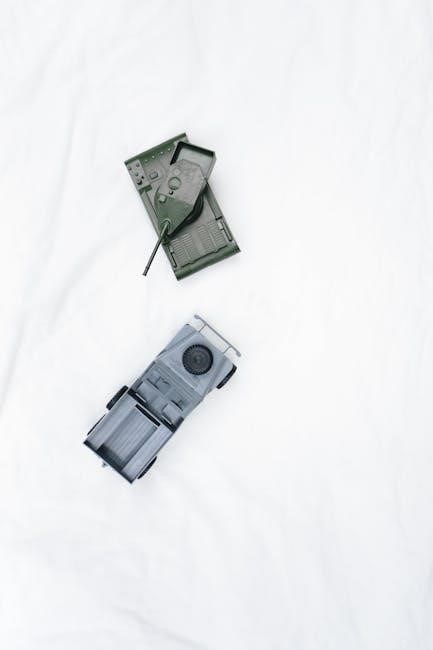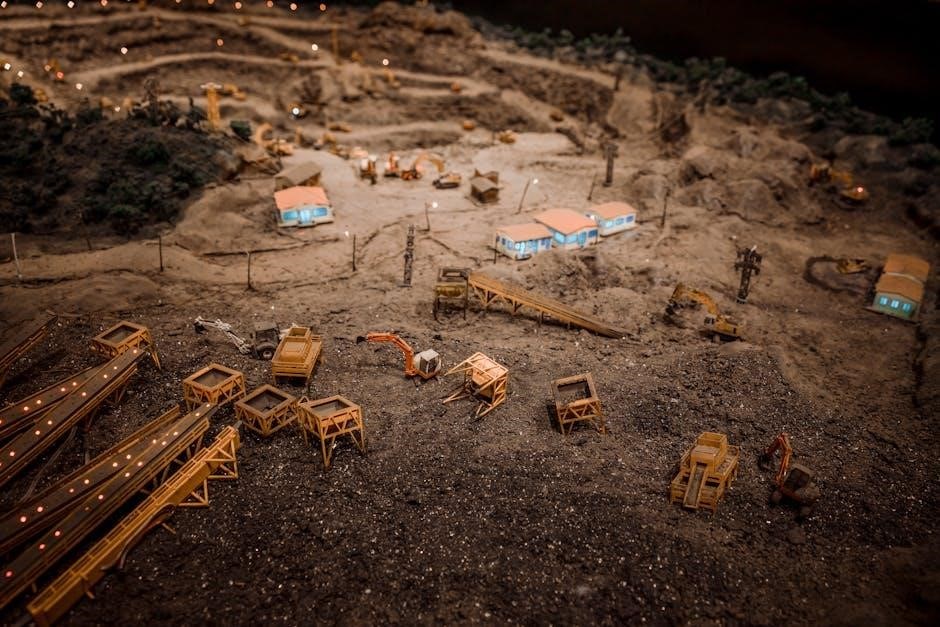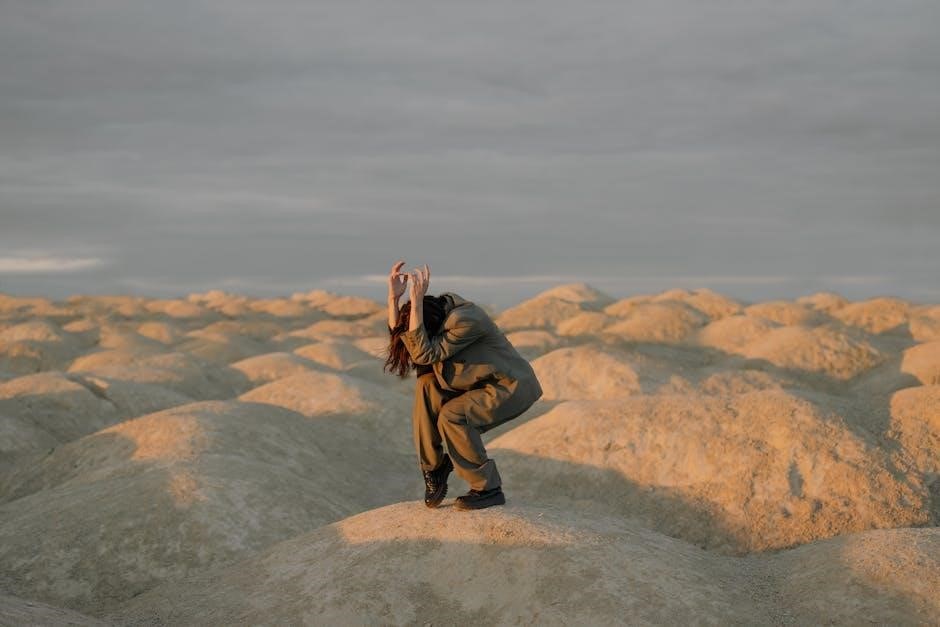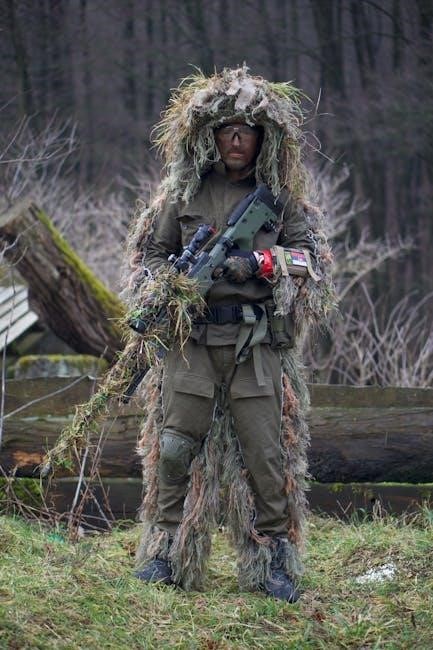Terrain Model Kit Army PDF: A Comprehensive Guide
This guide explores Army terrain model kits, focusing on their role in effective communication and mission planning․ Discover readily available resources, including PDF downloads, to enhance your understanding․ We will cover components, construction, and symbols used in the kits․
Terrain model kits are indispensable tools within the Army, serving as tangible representations of operational environments․ These kits facilitate comprehensive understanding and communication during mission planning and execution․ Primarily, they aid in visualizing the terrain and potential challenges․
These models are not mere replicas; they are critical instruments for conveying orders and ensuring shared situational awareness among soldiers․ They are particularly useful in Field Training Exercises (FTXs) and real-world deployments, where clarity and precision are paramount․ The kits often include various components, from contour lines to symbolic representations of key tactical features․
Furthermore, the effective use of a terrain model kit can significantly enhance a unit’s ability to anticipate and mitigate risks․ By examining the terrain in detail, leaders can identify advantageous positions, potential ambush sites, and optimal routes for maneuver․ This proactive approach ultimately contributes to mission success and the safety of personnel․ The Army’s emphasis on terrain models underscores their importance in modern military operations․
Ranger School, ROTC programs, and advanced training courses all utilize terrain model kits to instill these vital skills․ Accessible resources like PDF guides further support soldiers in mastering the art of terrain model construction and utilization․
Purpose and Importance of Terrain Models
Terrain models serve a crucial purpose in the Army, bridging the gap between abstract maps and the physical reality of the battlefield․ Their primary function is to provide a clear, three-dimensional representation of the operational environment, facilitating enhanced situational awareness among all involved personnel․

The importance of terrain models extends beyond mere visualization․ They are invaluable tools for planning and rehearsing military operations, enabling leaders to effectively communicate their intent and subordinates to understand their roles within the broader mission․ By physically manipulating the model, soldiers can gain a deeper understanding of the terrain’s impact on maneuver, lines of sight, and potential obstacles․
Moreover, terrain models are essential for identifying key terrain features, such as high ground, choke points, and avenues of approach․ This information is critical for developing effective tactical plans and mitigating risks․ The models also aid in coordinating troop movements and ensuring that all elements of the unit are working in concert․
In essence, terrain models provide a shared mental picture of the battlefield, fostering cohesion and enabling soldiers to make informed decisions under pressure․ Whether used in training exercises or real-world deployments, terrain models are indispensable assets for enhancing mission success and protecting lives․ They are a cornerstone of effective military leadership and operational planning, promoted across various levels, including ROTC and Ranger School․
Components of a Standard Army Terrain Model Kit
A standard Army terrain model kit comprises a range of essential components designed to facilitate the construction of accurate and informative representations of the battlefield․ The foundation of the kit is typically a sturdy base, often made of cardboard or foam board, providing a stable surface for building the model․
Contour maps, either printed or drawn, serve as the primary reference for depicting the terrain’s elevation changes․ These maps are used to create layers of cardboard or foam, which are then stacked to simulate the hills, valleys, and other topographic features․ The kit also includes materials for representing vegetation, such as flocking, shredded paper, or small twigs, adding realism to the model․
Symbols are a critical component of the kit, allowing users to mark key locations and features on the terrain model․ These symbols, often printed on laminated cards or sheets, represent military units, equipment, obstacles, and control measures․ Common symbols include those for friendly and enemy forces, command posts, and routes of advance․
Additional materials may include rulers, protractors, and markers for measuring distances, plotting coordinates, and labeling features․ Some kits also contain pre-made terrain features, such as buildings, bridges, and rivers, which can be easily added to the model․ The complete kit ensures units can build comprehensive terrain models․
Building an Effective Terrain Model for FTXs
Constructing an effective terrain model for Field Training Exercises (FTXs) requires careful planning and execution․ Begin by thoroughly studying the operational area using maps and reconnaissance data to understand the terrain’s key features, including elevation changes, vegetation, and obstacles․ Accurately represent these features on the model using appropriate materials and techniques․
Prioritize clarity and simplicity․ Avoid overcrowding the model with unnecessary details that could obscure important information․ Use standardized military symbols to clearly mark the locations of friendly and enemy forces, objectives, and control measures․ Ensure that the symbols are easily recognizable and properly oriented․

Pay close attention to scale and accuracy․ Maintain a consistent scale throughout the model to accurately represent distances and elevations․ Verify the accuracy of the terrain representation by cross-referencing with maps and other sources․ Use contour lines or layers to depict elevation changes, ensuring that the model accurately reflects the terrain’s topography․
Consider the model’s intended use and audience․ Tailor the level of detail and complexity to the specific requirements of the FTX and the knowledge level of the participants․ Ensure that the model is easily visible and accessible to all members of the planning team․
Finally, protect the model during transport and use․ Laminate components to protect against the elements․ A well-constructed model aids in communication during exercises․
Symbols Used in Terrain Models and OPORD Briefs
Terrain models and OPORD briefs rely heavily on standardized military symbols to convey information concisely and accurately․ These symbols represent various elements, including troop positions, enemy locations, obstacles, and control measures․ Understanding these symbols is crucial for effective communication during mission planning and execution․
Troop symbols typically indicate the type, size, and affiliation of military units․ For instance, a square with a single vertical line represents an infantry squad, while a larger square with two vertical lines represents an infantry platoon․ Different colors are used to distinguish between friendly, enemy, and neutral forces․
Obstacle symbols depict natural and man-made barriers that could impede movement․ These include rivers, forests, minefields, and barbed wire fences․ Control measure symbols define boundaries, objectives, and routes․ Examples include phase lines, axes of advance, and checkpoints․
It’s essential to use the correct symbols and adhere to established conventions to avoid confusion․ Resources like Army field manuals and flashcards can aid in learning and memorizing these symbols․ Moreover, practice using these symbols in terrain models and OPORD briefs to build proficiency․

Remember, consistency is key․ Employ the same symbols and conventions throughout the planning process to ensure clarity and prevent misunderstandings․ Using these symbols can significantly improve efficiency during operations․
Materials for Constructing Terrain Models
Constructing an effective terrain model requires a variety of materials, each serving a specific purpose in representing the battlefield․ The choice of materials depends on factors such as availability, cost, and desired level of detail․ A basic terrain model can be built using readily accessible items, while more elaborate models may incorporate specialized materials․
Commonly used materials include cardboard, foam board, and plywood for the base of the model․ These provide a stable and durable surface for constructing the terrain features․ Modeling clay or plaster of Paris can be used to create hills, valleys, and other elevation changes․ Sand, gravel, and dirt can simulate ground textures and vegetation․
Paint is essential for coloring the terrain and distinguishing different features․ Green paint represents vegetation, while brown and gray shades depict bare earth and rocks․ Markers and colored pencils can be used to add finer details, such as roads, rivers, and buildings․
Additional materials include string or yarn for representing roads and rivers, small sticks or twigs for trees, and miniature figurines for troops and vehicles․ Clear plastic sheets can be used to overlay the model and draw on control measures or unit positions․
For a more professional look, consider using commercially available terrain modeling materials, such as flocking, static grass, and resin castings․ These can add realism and detail to your terrain model․
DIY Terrain Model Kit Options and Resources (PDF Downloads)
Creating your own terrain model kit offers a cost-effective and customizable solution for military training exercises․ Several resources are available to guide you through the process, including downloadable PDF templates and instructions․
One option is to utilize printable terrain model kit templates․ These PDFs typically include pre-designed shapes and symbols that can be printed, cut out, and assembled to represent various terrain features․ These templates often include elements such as roads, buildings, rivers, and vegetation, which can be arranged on a base to create a realistic representation of the area of operations․
Another valuable resource is instructional guides that provide step-by-step instructions on how to build a terrain model from scratch․ These guides often cover topics such as selecting materials, creating terrain features, and adding details such as roads, buildings, and vegetation․ Some guides may also include tips on how to laminate and protect your terrain model for durability․
Online forums and communities dedicated to military modeling can also provide valuable information and inspiration․ These resources often feature discussions on different terrain modeling techniques, as well as examples of DIY terrain model kits that others have created․
By utilizing these DIY resources, you can create a terrain model kit that is tailored to your specific needs and training objectives․ This can be a cost-effective and rewarding way to enhance your understanding of terrain and improve your ability to plan and execute military operations․
Laminating and Protecting Terrain Model Components
To ensure the longevity and usability of your terrain model kit, laminating and protecting its components is crucial․ Terrain models are often used in the field, where they are exposed to the elements and potential damage․ Laminating the components provides a protective barrier against moisture, dirt, and wear and tear․
Laminating pouches are a popular option for protecting terrain model components․ These pouches are available in various sizes and thicknesses, allowing you to choose the best option for your needs․ Simply insert the component into the pouch and run it through a laminator to seal it in a protective layer of plastic․
Another option is to use self-adhesive laminating sheets․ These sheets can be applied directly to the surface of the component, providing a clear and durable protective layer․ Self-adhesive laminating sheets are easy to use and can be cut to size to fit any component․
In addition to laminating, consider using other methods to protect your terrain model components․ For example, you can store the components in a plastic bag or container to protect them from dust and moisture․ You can also use a sealant or varnish to protect the surface of the components from scratches and fading․
By taking the time to laminate and protect your terrain model components, you can ensure that they will remain in good condition for years to come; This will save you time and money in the long run, as you will not have to replace damaged or worn components․
Terrain Model Kits at Ranger School: Key Features
Ranger School emphasizes practical leadership and tactical proficiency, and terrain models play a crucial role in achieving mission success․ The terrain model kits used at Ranger School are specifically designed to meet the demanding requirements of the course․ These kits are characterized by several key features that set them apart․
Durability is paramount․ Ranger School operates in harsh environments, so the terrain model kits must withstand rigorous use․ Components are typically made from robust, weather-resistant materials, ensuring they can endure the elements and repeated handling․ The kit needs to survive being used in the field in all weather․

Portability is also essential․ Ranger students carry their kits over long distances, often on foot․ Therefore, the kits are designed to be lightweight and compact, minimizing the burden on the individual soldier․ It needs to be easily stored and accessed when needed․
Simplicity and ease of use are critical․ Under the stress of Ranger School, students need a terrain model kit that is quick and easy to assemble and interpret․ The components are clearly labeled and intuitive, facilitating rapid construction and effective communication․ The model needs to be made and understood quickly․
Comprehensive representation is vital․ While prioritizing simplicity, the kits must still allow for accurate depiction of terrain features, enemy positions, and planned routes․ The kits include a range of symbols and materials to enable detailed and informative terrain models․
Using Terrain Models to Communicate Orders
Terrain models serve as invaluable tools for military leaders to effectively communicate orders to their subordinates․ By providing a visual representation of the battlefield, terrain models enhance understanding, facilitate coordination, and improve overall mission success․ A well-constructed terrain model can convey complex information in a clear and concise manner․
When briefing orders, leaders use terrain models to orient their subordinates to the area of operations․ Key terrain features, such as hills, valleys, and rivers, are clearly identified, allowing soldiers to visualize the environment in which they will be operating․ This shared understanding of the terrain is crucial for effective decision-making․
Terrain models also illustrate the disposition of friendly and enemy forces․ Unit locations, movement routes, and engagement areas are marked on the model, providing soldiers with a comprehensive picture of the battlefield․ This situational awareness enables them to anticipate potential threats and coordinate their actions accordingly․
Furthermore, terrain models facilitate the communication of the commander’s intent․ By depicting the desired end state and key objectives, the model helps subordinates understand the overall mission goals․ This shared understanding empowers them to exercise initiative and adapt to changing circumstances on the battlefield․
Effective use of terrain models requires clear and concise communication․ Leaders should use standard military symbols and terminology to avoid ambiguity and ensure that everyone understands the information being presented․ Regular rehearsals using the terrain model help to reinforce understanding and identify potential problems before they arise․
